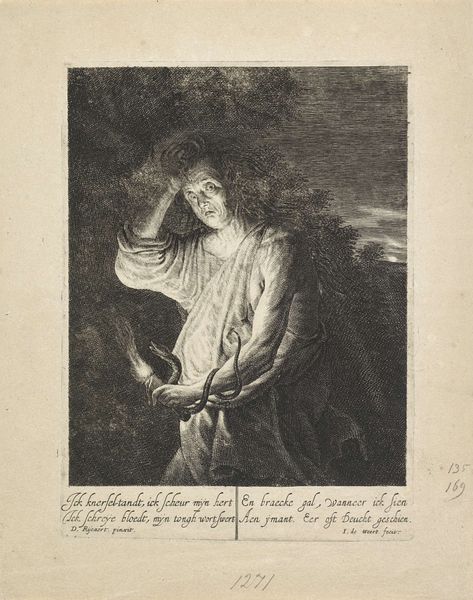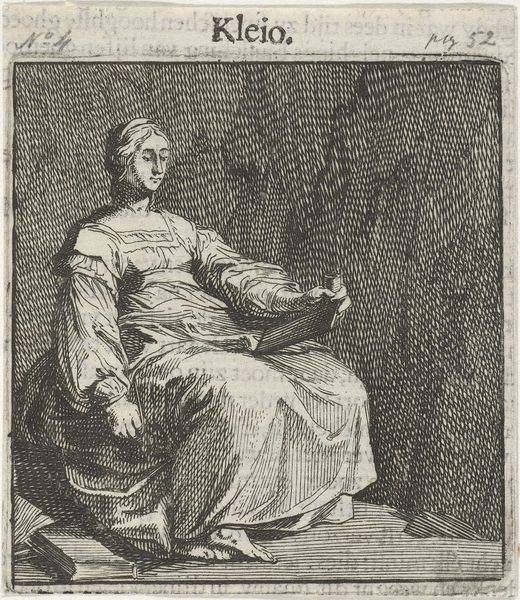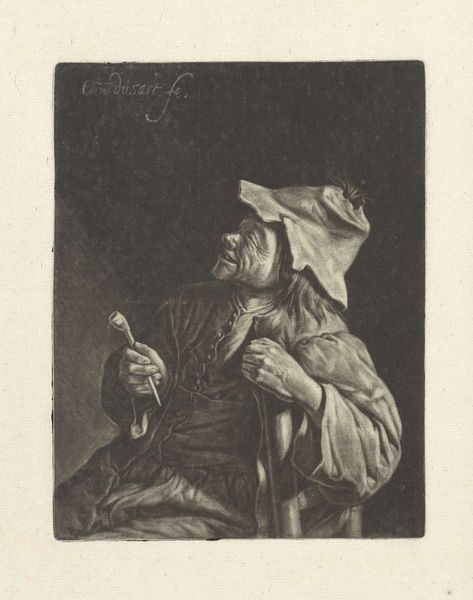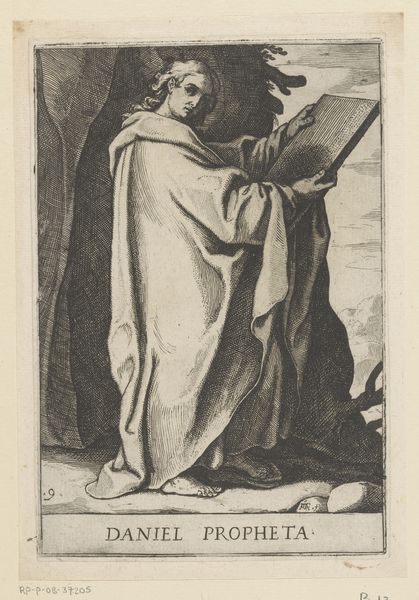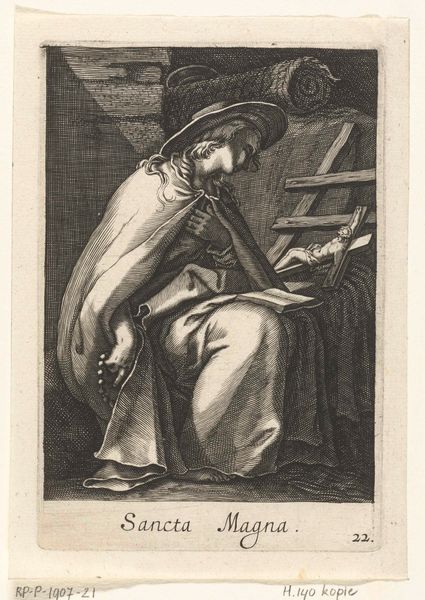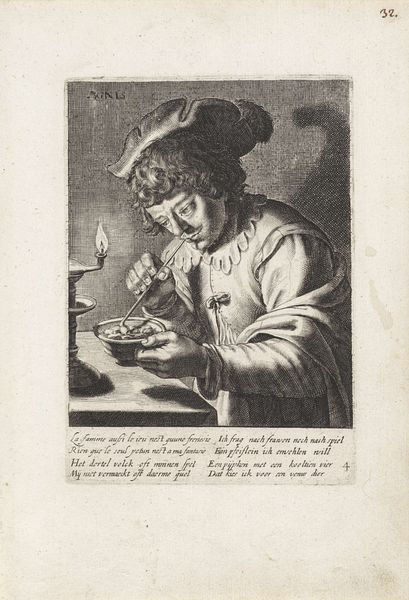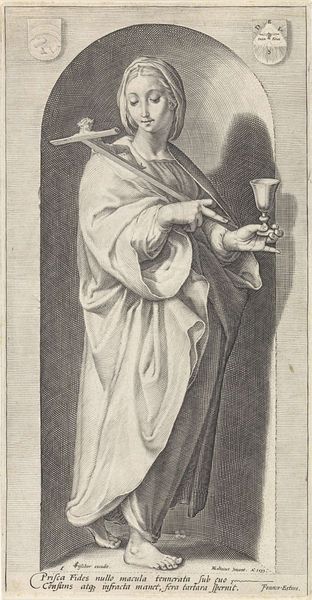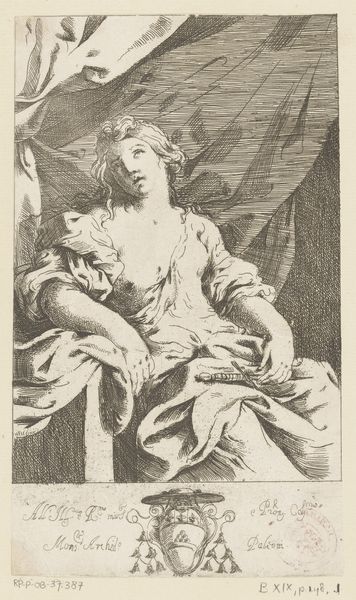
engraving
#
portrait
#
baroque
#
portrait reference
#
pencil drawing
#
genre-painting
#
engraving
Dimensions: height 238 mm, width 204 mm
Copyright: Rijks Museum: Open Domain
Curator: This engaging engraving, "Luit spelende man," or "Man Playing Lute," is attributed to Salomon Savery and dates to sometime between 1610 and 1665. It’s currently held at the Rijksmuseum. It immediately gives us insight into musical and performance culture of the period. Editor: My initial impression is the sheer energy of it. The open mouth, the tilted head—you can almost hear him singing, straining even! It’s a stark but compelling image. Curator: Absolutely. Savery captures a moment of fervent artistic expression. It also speaks to the role of music in society and the status of musicians, who occupied an important, if not always high-status, position. The man’s clothing, particularly his feathered cap, suggest some degree of affluence. Editor: Yes, and the intricacy of the engraving itself—the meticulous rendering of the fabrics and the lute’s details. Look at how the light falls across the folds of his cloak! It reflects a significant investment of labor and material skill, reminding us that printmaking was a collaborative process involving artists, engravers, and printers all working together. It had more commercial applications. Curator: That’s right. Engravings like this had a didactic purpose, popularizing images and styles to wider audiences. The inscription at the bottom reinforces the connection between playing the lute and singing, almost as sheet music for the emerging literate and cultured public. Editor: And considering it's an engraving, the way the artist achieves texture and tonal variation through lines is remarkable. Each etched stroke feels deliberate. I wonder about the types of tools used to carve out such detail onto the copperplate, the skills involved in this artistic production are so complex. Curator: A vital consideration. We must also understand the reception context of prints, they acted as agents in circulating artistic tastes in that specific social frame. Editor: Reflecting on it, it's the convergence of raw expressive power with painstaking craftsmanship that resonates. It is not simply an artistic product; it is evidence of the social and material circumstances that defined art and labor in that era. Curator: Indeed. By looking at it through the lens of history and culture, we gain richer insights into the past and broaden our understanding of ourselves.
Comments
No comments
Be the first to comment and join the conversation on the ultimate creative platform.

